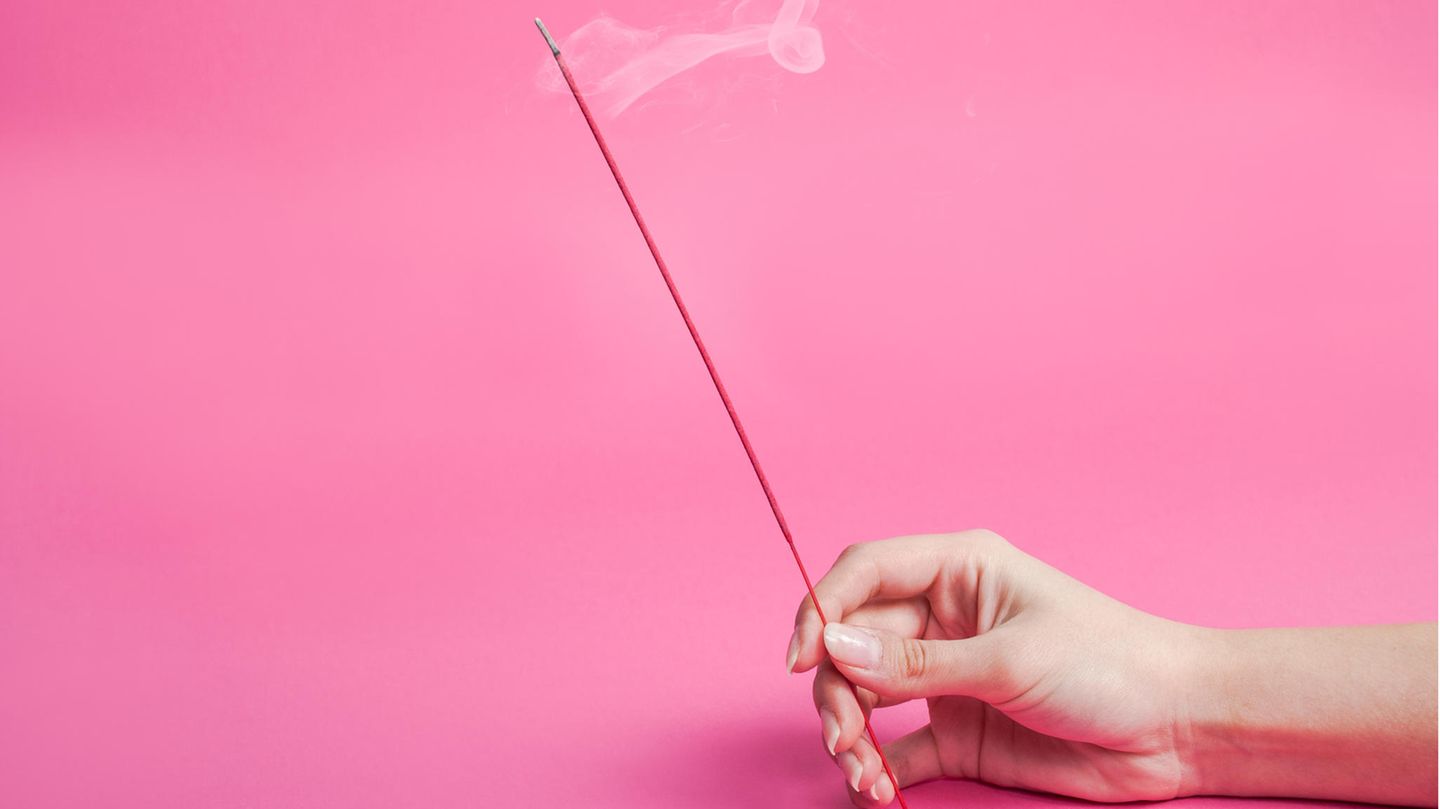Whether for meditation, yoga or for a good smell at home: incense sticks have different areas of application. What you should consider when using it and what you should know before purchasing.
They spread an intense scent and can have a positive influence on the mood: incense sticks are suitable for meditation, yoga or as a fragrant accessory at home. What you should know about the chopsticks and what they are suitable for.
What exactly are incense sticks?
Incense sticks are incense that are made into the practical shape of a stick. This is done in different ways depending on the type of incense stick. When they are burned, the scent develops – usually a very intense one. A distinction is made between these types of incense sticks:
- do not contain a wooden stick, but water, fragrances and wood powder are pressed into stick form. The whole thing is then dried.
- The They are also created in this way, but are slightly larger in diameter than Japanese incense sticks.
- Vietnamese and have a wooden or bamboo stick onto which the active ingredients are pressed. When burning, you will smell not only the actual incense but also a smokier note.
History of incense sticks
It is said that smoking has been around since fire was discovered. Fire was once viewed as a gift from the gods. By smoking dry herbs, bark or resins, new prayer rituals emerged that were intended to drive out negative vibrations and spirits. Some people still believe in this today and use incense and incense sticks for this purpose.
In Buddhism and Hinduism, incense sticks are part of religious ceremonies. Apart from these applications, they can now also be found in private households, where they are used without a religious background and are used as a scented accessory for meditation, yoga or simply for a pleasant or calming room scent.
Effect of incense sticks
It has not been proven whether the use of incense sticks can really do anything with negative energies. What is clear, however, is that scent and ritual can have an impact on your mood and well-being. Incense sticks are said to have the following effects:
- The smoke is said to have a cleansing effect and, as already mentioned, to free rooms from negative energies. There is no scientific evidence or other evidence for this.
- Some fragrances promote concentration and can contribute to inner peace and calm, such as scents such as sandalwood. Calming scents are particularly suitable for meditation. Fragrances also stimulate the senses, which is particularly suitable for yoga or meditation, as it involves feeling consciousness and perceiving with all the senses.
- Incense sticks can also help to deter mosquitoes and flies.
- The sticks are also suitable as accessories for aromatherapy and are used to calm the body, soul and spirit.
- Incense sticks with scents such as cinnamon or rose can have a stimulating, warming and aphrodisiac effect.
Application of incense sticks
Using an incense stick correctly seems very simple: light it and off you go. But: It takes a little knowledge to develop the effect of the incense. To use it you first need the following:
Then it’s time to light it and later turn it off safely. This works best as follows:
Light incense sticks
- Place the incense stick holder on a fireproof surface.
- Light the incense stick at its tip and gently fan it with your hand until it glows. It now begins to smoke and the scent gradually develops.
- Now place the incense stick in the incense stick holder. Alternatively, a container with sand in which the stick can hold is also suitable.
Put out incense sticks
If you use the incense stick for yoga or meditation or for a calming scent, you can simply let it burn out until the end. Alternatively, you can also extinguish it with water beforehand, for example by holding it in a glass of water. After using incense sticks, it is best to ventilate the room well.
Buying tips
Depending on what you plan to do with the incense stick and which scents you like, there are criteria you can use when purchasing:
- Production method: Do you like the smoky note when it burns? Then Vietnamese and Indian incense sticks that have a wooden or bamboo stick are suitable. Otherwise, choose Tibetan or Japanese incense, where the incense is pressed without a stick.
- Ingredients/Fragrance: Do you want to use the stick to calm you down? Then scents such as sandalwood, lavender and others are suitable. For a stimulating effect, choose rose or cinnamon.
- Burning time: For example, for longer yoga sessions, incense sticks with a longer burning time are suitable, such as Tibetan incense sticks, which are quite large in diameter.
Danger from smoke detectors?
Since a lot of smoke is produced when using incense sticks, the smoke alarm may sound. The sticks should ideally be used in a room that does not have a smoke detector. It is best to close the door and then ventilate it. Alternatively, the smoke detector can be switched off or the battery removed while smoking is taking place. Be sure to activate the smoke detector properly afterwards.
Possible risks from using incense sticks
Incense sticks can increase well-being, help calm or concentrate and have other positive effects. However, there are also risks when using it:
- Inferior products often contain synthetic additives that are not only harmful to the environment but can also be hazardous to health. Incense sticks with natural ingredients are therefore best.
- Incense sticks release fine dust particles into the air. These can penetrate the lungs and therefore increase the risk of lung cancer. Heart disease, asthma and nerve damage are also sometimes associated with incense, so we are also raising awareness of these risks.
Alternatives to incense sticks
If you have concerns about using incense sticks but want intense scents at home, you can also use aromatherapy with essential oils. There is something like that which you can fill with essential oils to also release different scents.
Source: Stern
I am an author and journalist who has worked in the entertainment industry for over a decade. I currently work as a news editor at a major news website, and my focus is on covering the latest trends in entertainment. I also write occasional pieces for other outlets, and have authored two books about the entertainment industry.




